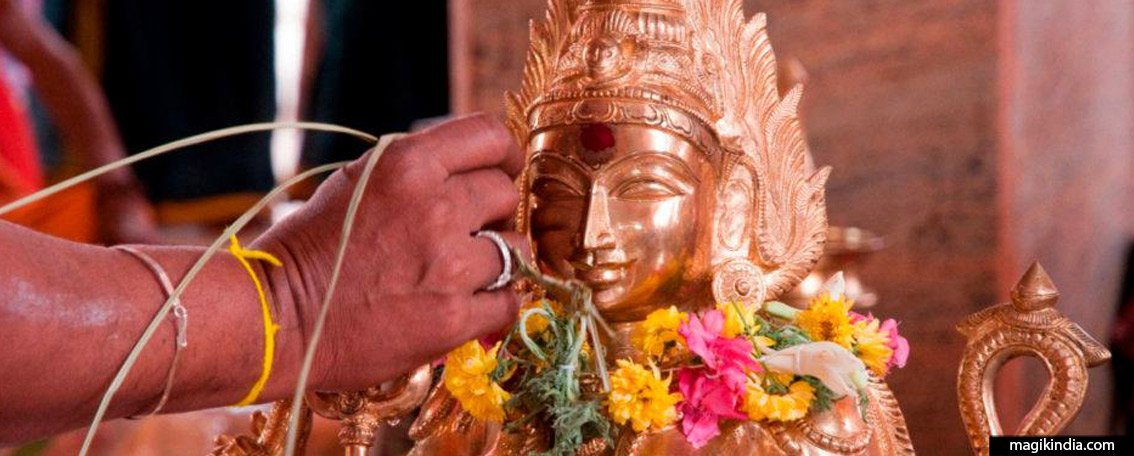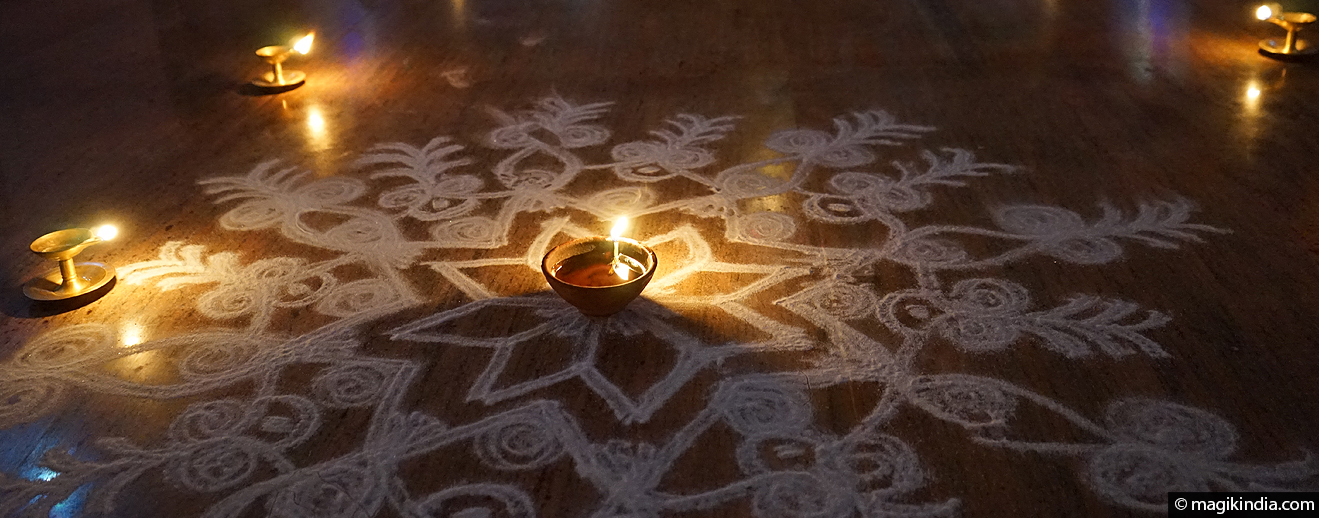
Pillaiyarpatti, the abode of Karpaga Vinayakar
The town of Pillaiyarpatti is located 70 kilometers northeast of Madurai and close to Karaikudi, the city of forgotten palaces. Pillaiyarpatti is famous for its temple “Karpaka Vinayakar” over a thousand years old dedicated to Ganesha, the elephant-headed god, revered as the embodiment of wisdom.
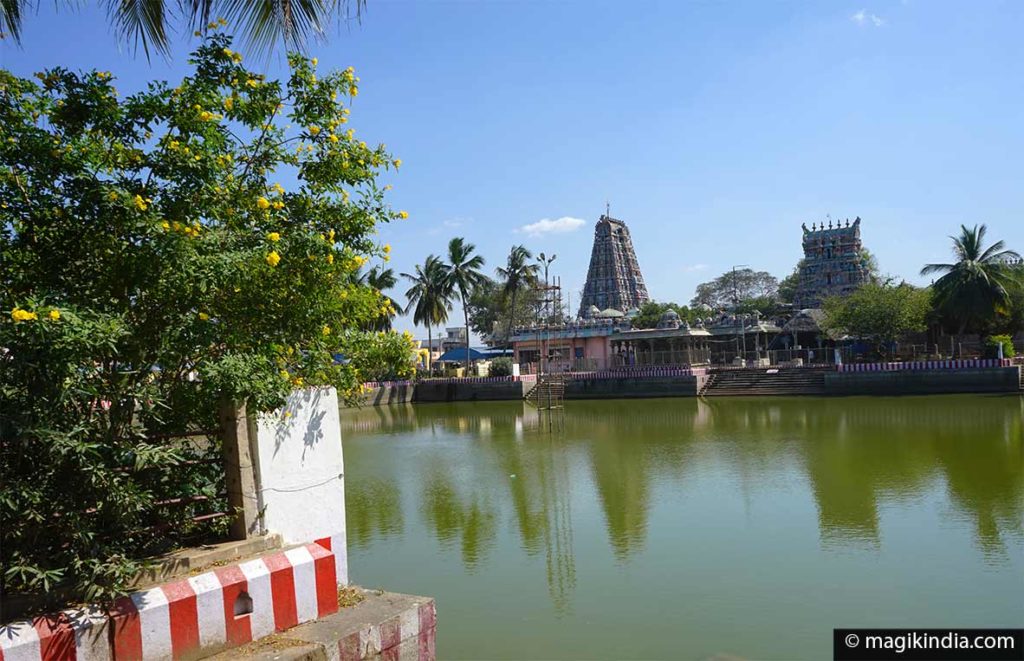
Karpaka Vinayakar is one of those temples in southern India that leaves you with a mysterious feeling, perhaps it is due to the age of the site; According to the inscriptions found in the temple, it is believed that this sanctuary dates back over a thousand years.
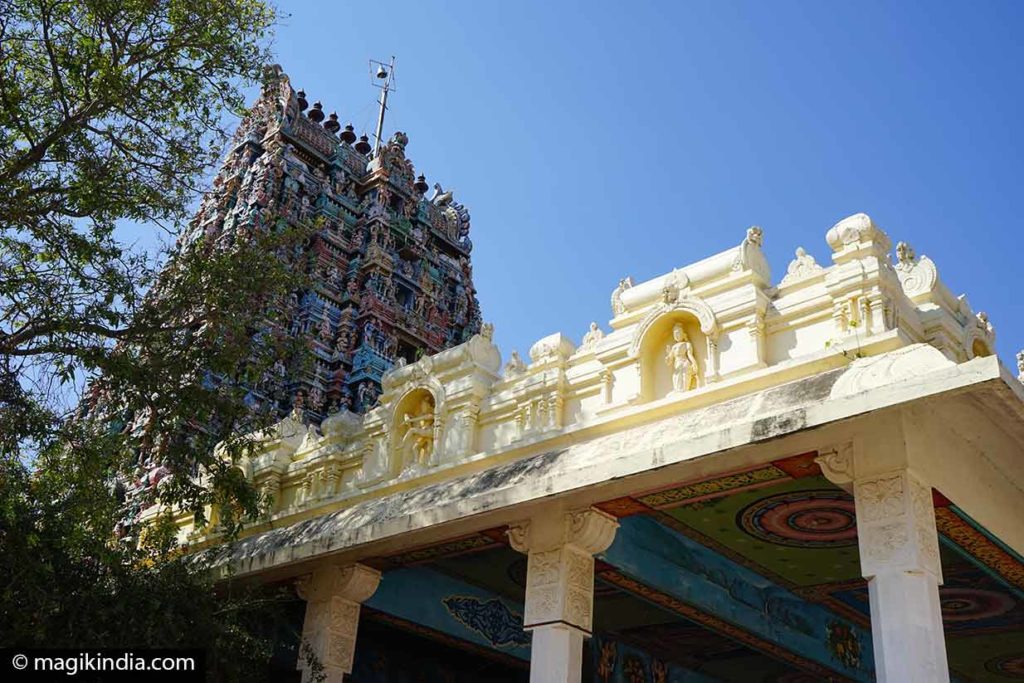
The main deity and attraction of the temple is a superb bas-relief carved into the walls of a cave: it is the 1.80 meter sculpture of Vinayaka (‘the incomparable leader’), one of the forms of the Lord Ganesha. The elephant-headed god is represented here in the yoga pose ‘Ardha Padma Asana’, i.e. sitting in a half-lotus, with only two arms (instead of four) and a trunk curved to his right (valampuri), a fairly rare image in India. Its elephant head also has the shape of the sacred mantra OM in its Tamil version (ௐ).
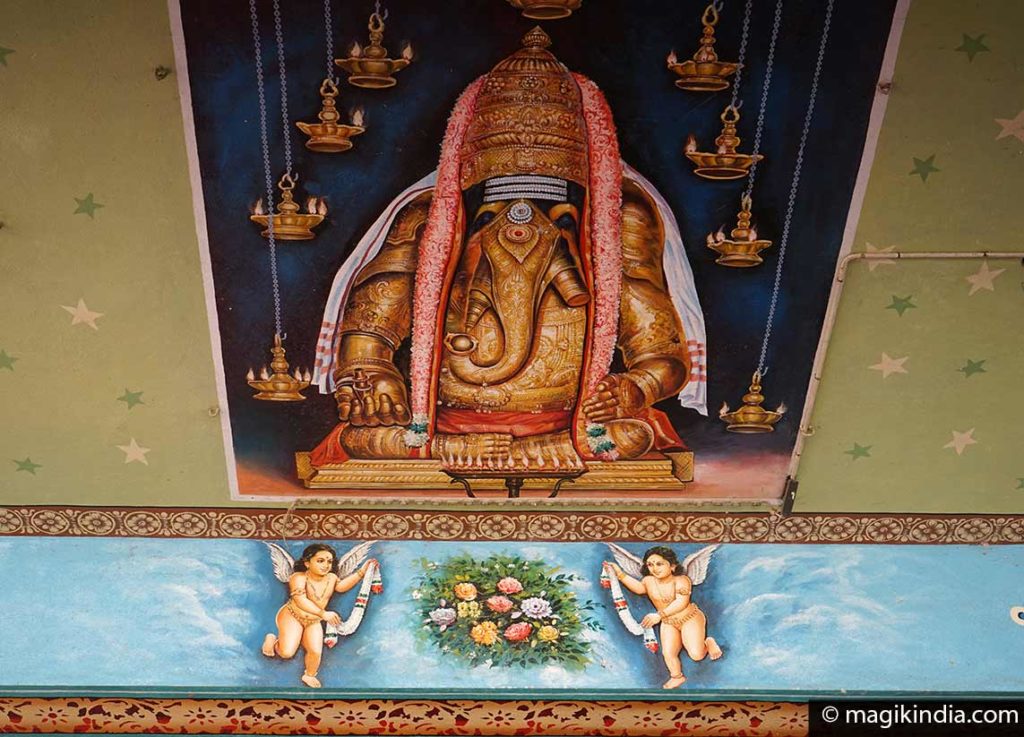
As, in this temple, Lord Vinayaka responds positively to the wishes of his faithful like a Kalpataru, a mulberry wish-fulfilling tree, he is also known as ‘Karpaga Vinayakar’.
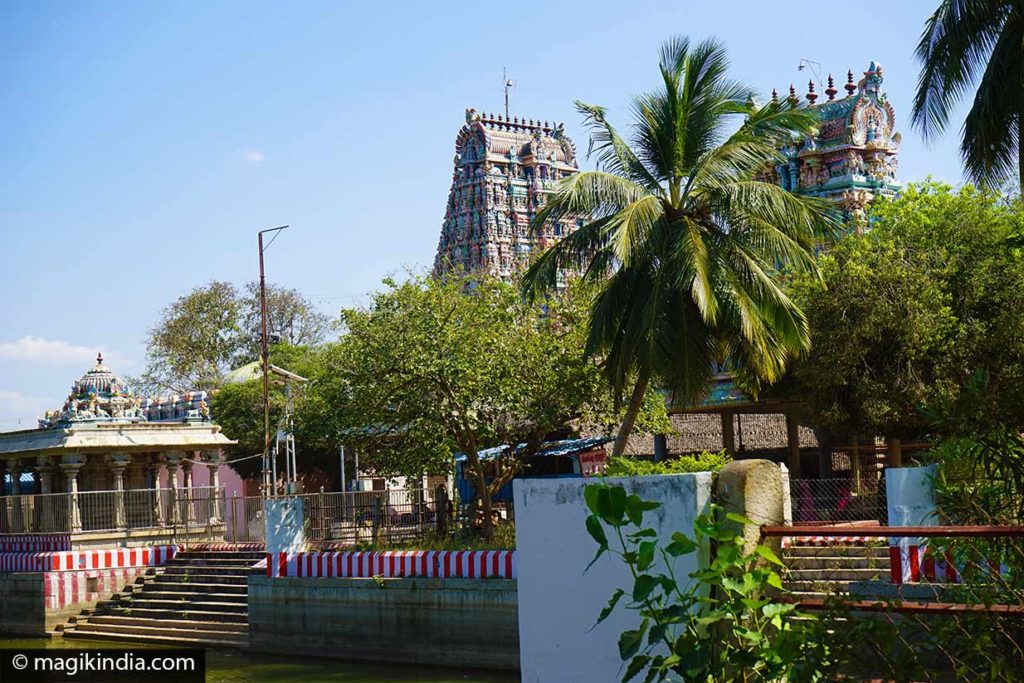
The temple also has three Shiva-lingams, (Thiruveesar, Marudheesar and Senchadeswarar) and three goddesses (Sivagami Amman, Vadamalar Mangaiamman and Soundara Nayaga Amman) in one room.
The symbolism of the Ganesha trunk
Ganesha is known for removing obstacles from life. It also confers prosperity and wisdom on its followers.
As we saw above, the Ganesha trunk in the Pillaiyarpatti temple is curved to the right, which is not common in India where most of the Ganesha statues have their trunks curved to the left.

The Ganesha trunk curved to the left side (idamburi) represents ‘Ida Nadi’, which is linked to the moon, a feminine, soothing and nourishing energy. It is generally the statue that Hindu families keep at home because it signifies abundance and prosperity.
The statue of Ganesha with a curved trunk on the right side (valampuri) represents ‘Pingala Nadi‘, a masculine, solar and fiery energy. It is also called ‘Siddhi Vinayaka‘; it signifies the freedom from all the pleasures of the world and the realization of the Moksha (the final liberation of the individual soul). It is an energy of asceticism. Also, idols with the trunk on the right side are generally only found in temples where specific rituals are performed.





